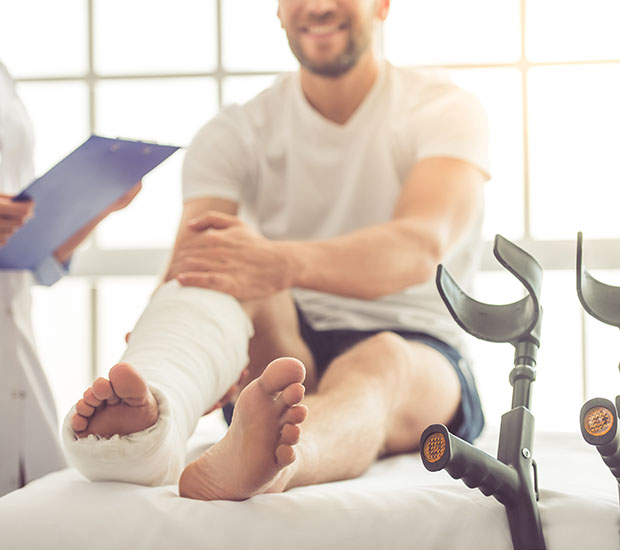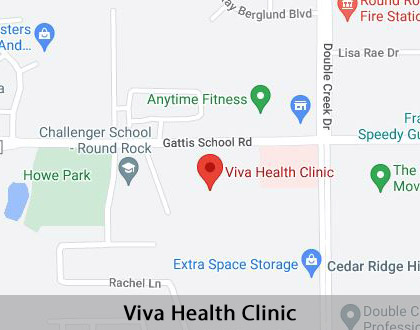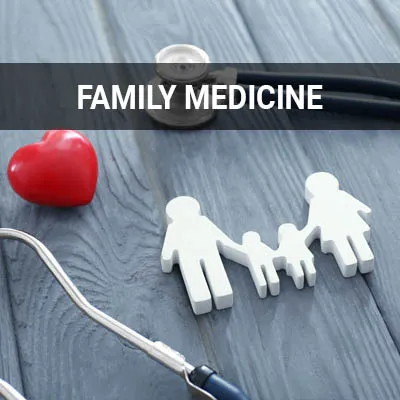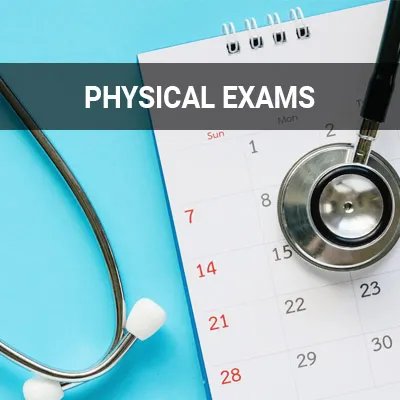Broken Bone Treatment Round Rock, TX
Broken bones require immediate attention, as improper or negligent care may interfere in the hezaling process. As a result, bones may end up healing incorrectly, leading to long-term complications and unnecessary pain. A primary care practitioner can help patients with broken bones that have not punctured the skin, shattered in multiple places, or are accompanied by any life-threatening issues.
Treatment for broken bones is available at Viva Health Clinic in Round Rock and the surrounding area. We are dedicated to helping our patients recover as quickly and as comfortably as possible. Call us today at (512) 243-5872 to schedule an appointment or to learn more about our services.
Understanding Broken Bones
Broken bones exist on a spectrum of severity, from minor to severe. A broken bone, also known as a bone fracture, is any bone with a crack, slight break, or complete break. The most common bone fractures include closed, comminuted, oblique, open, compound, and simple fractures.
In a closed fracture, the break does not puncture the skin, and the bone is not visible. In comparison, a comminuted fracture is much more severe and entails the bone shattering into three or more fragments. A break in an oblique fracture results in an angled pattern. In an open fracture, the break pierces through the skin, potentially leaving the bone visible.
Simple fractures are typically the easiest to diagnose, though there may be some initial confusion over whether the bone is actually broken or just deeply bruised. Although painful, it is fairly easy to treat a broken bone, so patients can often make a full recovery with the right care.
“Broken bones exist on a spectrum of severity, from minor to severe.”
Symptoms of Broken Bones
It can be difficult for individuals to recognize when they have broken a bone, especially when the break is not as severe (as is the case with many simple fractures). Thus, patients should seek medical attention as soon as they begin experiencing any symptoms. These include:
- Displacement of a limb or joint
- Extreme swelling, bruising, or bleeding
- Inability to move or put pressure on the affected area
- Numbness or complete loss of feeling
- Severe and unbearable pain in the affected area
Pain can come from various conditions, such as deep bone bruising, dislocated joints, or sprains. Only a practitioner can correctly diagnose a patient's condition and plan out the best method of treatment.
“Only a practitioner can correctly diagnose a patient’s condition and plan out the best method of treatment.”
Treating Broken Bones
As mentioned earlier, improper procedure after a broken bone can lead to severe long-term complications. While not all severe bone injuries result in a bone fracture, it is crucial to receive a proper medical diagnosis before starting any long-term treatment, especially before returning to physical activity.
Luckily, there are several options available to ensure the rehabilitation process goes smoothly. Typically, simple fractures are encased in a cast after arranging the bone back into place. The cast, which the patient usually wears for several weeks, helps ensure the bone does not shift as it heals. If the broken bone is more severe, such as a comminuted fracture, surgery may be required for proper repositioning.
The most common forms of surgery to fix a broken bone are external fixation and internal fixation. In an external fixation procedure, pins connect a ring or bar outside the bone to hold it into place. We will remove the pins after the broken bone has healed, the pins are removed. Internal fixation requires the use of metal rods or screws to be inserted into the bone fragments to keep them intact.
“If the broken bone is more severe, such as a comminuted fracture, surgery may be required for proper repositioning.”
Check out what others are saying about our primary care practitioner services on Yelp: Broken Bone Treatment in Round Rock, TX
Questions Answered on This Page
Q. Are fractures the same thing as broken bones?
Q. What are the symptoms of broken bones?
Q. How do you treat a broken bone?
People Also Ask
Q. What are some of the most common conditions treated by a primary care provider?
Frequently Asked Questions
Q. What is the difference between a bone fracture and a dislocated joint?
A. Since dislocated joints occur in the same manner as bone fractures, they often share the same symptoms. Both may be very painful, create an inability to move or use the affected joint, and can lead to a body part appearing out of position. The main difference between the two is that a bone fracture describes a break in the bone, while a dislocated joint usually does not involve bone damage at all. While a dislocated joint can be scary, it is relatively easy to diagnose and treat.
Q. How long does it take to recover from a broken bone?
A. The recovery time for a simple fracture is typically between six to eight weeks, although the exact time varies for each individual. More serious fractures that require surgery to repair may take longer to heal. Many cases may also need physical therapy as part of the healing process, primarily if the injury occurred while playing a sport. You can help ensure a speedy recovery by receiving proper rest and staying off the affected area, particularly if it is a leg or foot. Also, follow any advice given by your practitioner and communicate with them throughout the healing process.
Q. Do all bone fractures require surgery?
A. Many bone fractures do not require surgery to heal correctly. For more minor fractures, such as a simple fracture and some oblique fractures, the broken bone can heal with cast immobilization and proper rehabilitation. However, most comminuted fractures and compound fractures require surgery to fully restore the bone to its original strength and function. Be sure to consult with your practitioner about all treatment options available and voice any questions or concerns you have about the treatment and healing process.
Q. How long will it take for my ligaments to heal?
A. Ligaments are the connective tissue that attaches one bone to another. They heal much more slowly than broken bones. It can take several months for ligaments to recover, mostly due to their relatively poor blood supply.
Q. What will it look like when I get my cast removed?
A. It is typical for the injured area to look and feel strange once your cast has been removed. The skin may be dry, flaky, or pale, and hair will likely look darker. You may also feel that your muscles have become smaller or weaker. Luckily, these changes are all temporary. Your practitioner may also provide you with special exercises to do to return your muscles to their original state.
Start Feeling Better – Visit Us Today
By visiting us as soon as possible, our team can help get you the professional treatment you need. Instead of waiting around and allowing the symptoms to get worse, we can provide you with treatment options.
Definition of Medical Terminology
Call Us Today
Proper examination and diagnosis are essential to the appropriate healing of broken bones. A primary care practitioner may be able to help. Call us today at (512) 243-5872 to schedule an appointment or learn more about our services.
Helpful Related Links
- American Journal of Medicine. American Journal of Medicine. 2023
- American Medical Association (AMA). American Medical Association (AMA). 2023
- American Medical Society For Sports Medicine (AMSSM). American Medical Society For Sports Medicine. 2023
- American Trauma Society. American Trauma Society. 2023
- John Hopkins Medicine Orthopaedic Surgery. John Hopkins Medicine Orthopaedic Surgery. 2023
- National Council on Aging. National Council on Aging. 2023
- Orthopaedic Surgery: Association of American Medical Colleges. Orthopaedic Surgery: Association of American Medical Colleges. 2023
- Radiological Society of North America. Radiological Society of North America. 2023
About our business and website security
- Viva Health Clinic was established in 2023.
- We accept the following payment methods: American Express, Cash, Discover, MasterCard, and Visa
- We serve patients from the following counties: Williamson, Travis, McLennan
- We serve patients from the following cities: Pflugerville, Austin, Kyle, Waco, Leander, Cedar Park, Bastrop, Round Rock, Georgetown, Hutto, Liberty Hill, and Taylor
- National Provider Identifier Database (1104428416). View NPI Registry Information
- Norton Safe Web. View Details
- Trend Micro Site Safety Center. View Details
Back to top of Broken Bone Treatment










